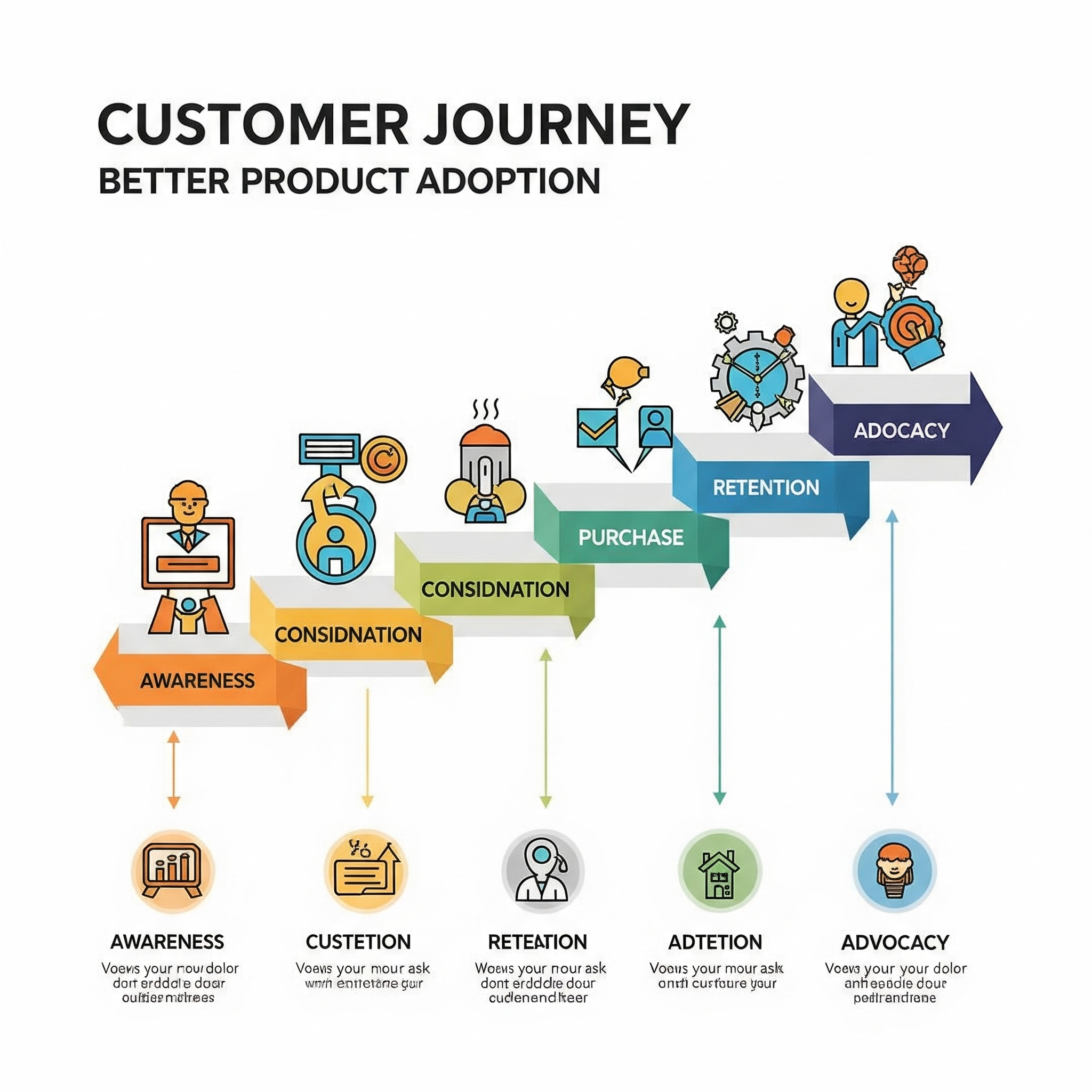When it comes to launching a product, building it is only half the battle. The real challenge lies in ensuring that users not only try it—but stick with it. This is where customer journey mapping becomes a powerful tool.
Understanding how users discover, interact with, and eventually adopt your product allows you to design better experiences, reduce friction, and ultimately, drive growth. Let’s break down how mapping the customer journey can significantly improve product adoption.
What Is the Customer Journey?
The customer journey is the complete lifecycle a user experiences with your product—from the moment they become aware of it to becoming a loyal advocate. Mapping this journey means visually representing each stage, capturing user thoughts, emotions, and behaviors.
Why Journey Mapping Matters for Product Adoption
Product adoption doesn’t happen by accident. Users need to:
-
Understand the value of your product
-
Know how to use it effectively
-
Experience success early and often
Journey mapping helps identify where users may drop off or get confused, allowing you to intervene strategically.
The 5 Key Stages of the Customer Journey
Here’s how to map the customer journey with product adoption in mind:
1. Awareness
What’s happening: Users first hear about your product.
Touchpoints: Ads, blog posts, social media, referrals.
Goal: Capture attention and create curiosity.
Tips: Focus on educating your audience about the problem your product solves.
2. Consideration
What’s happening: Users are evaluating options.
Touchpoints: Website, case studies, free trials, demos.
Goal: Build trust and demonstrate value.
Tips: Make onboarding resources and success stories easily accessible.
3. Onboarding
What’s happening: Users sign up and begin using the product.
Touchpoints: Welcome emails, tutorials, in-app guides.
Goal: Deliver quick wins and guide users to their “aha” moment.
Tips: Simplify setup and personalize the experience based on user goals.
4. Engagement
What’s happening: Users explore features and integrate your product into their workflow.
Touchpoints: In-app messages, support, knowledge base.
Goal: Encourage consistent usage and deepen product value.
Tips: Monitor user behavior and nudge them toward advanced features.
5. Advocacy
What’s happening: Satisfied users become promoters.
Touchpoints: Surveys, reviews, referral programs.
Goal: Turn users into loyal fans who spread the word.
Tips: Make it easy for users to share feedback and success stories.
Also Read: Advanced Product Marketing Training
How to Start Mapping Your Customer Journey
-
Interview your users – Understand what they’re thinking, feeling, and doing at each stage.
-
Collect data – Use analytics to see where users drop off or succeed.
-
Visualize the journey – Use tools like flowcharts or journey maps.
-
Identify friction points – Highlight confusing steps or dead ends.
-
Iterate and optimize – Continuously refine your journey map as you gather feedback.
Final Thoughts
Mapping the customer journey isn’t just a marketing exercise—it’s a strategic advantage. When you know what your users experience, you can build better onboarding, more helpful content, and smarter product features.
